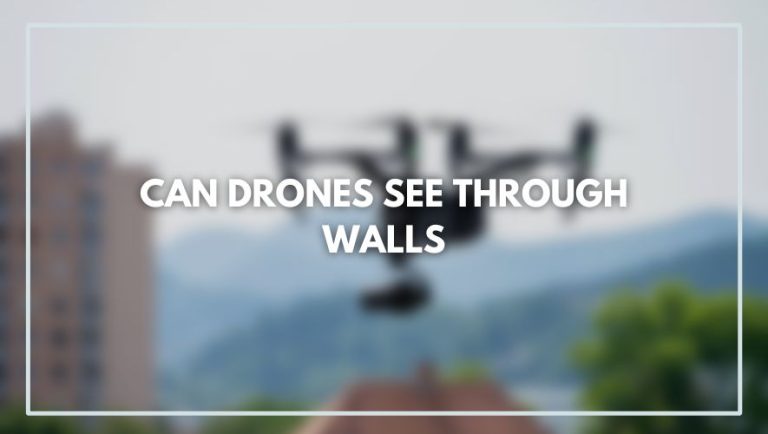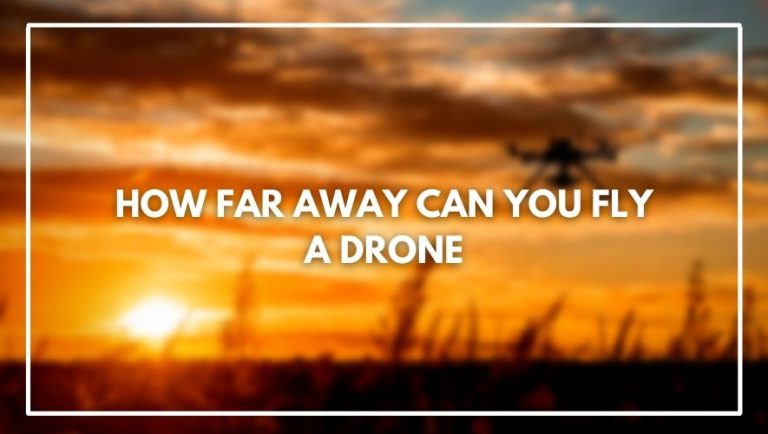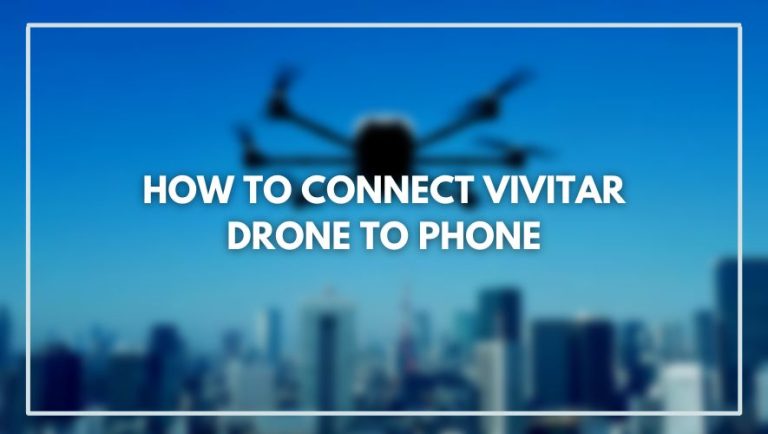Travelling with a drone can add a whole new dimension to your adventures. From capturing breathtaking aerial footage of scenic landscapes to exploring remote locations, a drone can enhance your travel experience in countless ways.
How to Travel With a Drone? When traveling with a drone, it’s important to research the regulations and rules of your destination beforehand. Pack the drone in a sturdy case and carry it with you on the plane as a carry-on item. Remove the drone’s batteries and pack them separately in a fireproof bag.
However, travelling with a drone can be a bit daunting, especially if you’re not familiar with the rules and regulations surrounding drone usage. But fear not! With a little bit of preparation and research, you can safely and legally travel with your drone and create unforgettable memories.
First and foremost, it’s essential to research the drone laws and regulations of the country you’re travelling to. Different countries have varying rules and requirements, and it’s crucial to familiarize yourself with them to avoid any legal trouble.
It’s also important to pack your drone properly to prevent damage during transit. This includes investing in a sturdy carrying case and removing the batteries from your drone.
In this guide, we’ll explore in detail everything you need to know to travel with a drone successfully. So pack your bags, charge your batteries, and let’s dive into the world of drone travel!
Preparing For Travel With A Drone

Preparing for travel with a drone involves researching the specific laws and regulations of the destination country or region, obtaining necessary permits or licenses, packing the drone securely in a carry-on bag, and ensuring that all necessary accessories such as batteries are also properly packed and within airline regulations.
Preparing For Travel With A Drone can be an exciting and rewarding experience, but it requires careful planning and preparation. There are several subheadings to consider before embarking on your adventure with your drone.
Regulations And Permits:
Before taking your drone abroad, you must research the drone regulations and obtain the necessary permits. Some countries have strict laws regarding drones, and failing to comply can result in fines or confiscation of your equipment. It’s important to stay up-to-date with the latest rules and regulations to avoid any legal issues.
Transportation:
Transporting your drone safely is essential. You can either carry it with you as a carry-on item or pack it in your checked luggage. Make sure to remove the battery and pack it separately. You can also consider investing in a specialized drone bag or case for added protection.
Batteries And Chargers:
Batteries are crucial for your drone’s operation, and you should have enough backup batteries to avoid running out of power during your travels. Ensure that all batteries are charged and packed securely to prevent any damage during transit. You may also need to bring a universal adapter for charging your batteries and drone controller in foreign countries.
Planning Your Flights:
Plan your flights in advance and scout out the location where you plan to fly your drone. Check for any no-fly zones, restricted airspace, or local regulations. You may also want to consider taking a test flight in a safe and open area to get familiar with your drone’s controls before flying in unfamiliar territory.
Photography And Videography Gear:
A drone is an excellent tool for capturing stunning aerial shots and videos. Make sure to pack additional SD cards and lenses, and invest in a quality gimbal to stabilize your footage. You can also consider packing a tripod or monopod to set up your shots on the ground.
Finding The Best Drone Shots While Traveling
Finding the best drone shots while travelling requires careful planning and research to identify scenic locations and ensure compliance with local regulations. It’s also important to consider lighting, weather conditions, and the overall composition of the shot to capture stunning aerial footage that highlights the beauty of your surroundings.
Drones have revolutionized the way we capture photos and videos during travel, allowing us to take stunning aerial shots that were once only possible with expensive equipment. With so many possibilities, finding the best drone shots while travelling can be a challenge.
Plan Ahead:
Before travelling, research the destination you are visiting and identify potential drone-friendly areas. Check for regulations and permits necessary to fly your drone in the area. Research the weather and wind conditions so that you can prepare accordingly.
Scout The Location:
Once you arrive at your destination, take time to scout the area and identify possible shooting locations. Look for interesting landscapes, unique features, and beautiful patterns that would make good subjects for your drone shots. Take time to observe the lighting and the direction of the sun to capture the best shots.
Timing Is Key:
The best time to take drone shots is during the golden hour, which is the hour after sunrise or the hour before sunset. This is when the light is soft and warm, creating a beautiful glow on the landscape. Avoid taking shots during midday when the light is harsh and creates unflattering shadows.
Experiment With Angles:
Drones allow for creative perspectives that are impossible to achieve with traditional cameras. Experiment with different angles and heights to capture unique shots. Try shooting from low angles or flying your drone at different heights to create dramatic perspectives.
Add Movement:
Drones can capture stunning videos when in motion. Try to add movement to your shots by slowly flying the drone towards the subject, circling around the object, or even following a subject. Make sure to practice safe flying techniques when adding movement to your drone shots.
Travelling Solo With A Drone

Travelling solo with a drone can be a unique and rewarding experience, allowing for stunning aerial photography and videography. However, it is important to research and follow local regulations, takes necessary safety precautions, and respect others’ privacy to ensure a successful and responsible trip.
Travelling solo with a drone can be an incredibly rewarding experience for adventure seekers and photography enthusiasts alike. The ability to capture stunning aerial footage and explore remote locations from a bird’s-eye view adds an entirely new dimension to solo travel. However, before embarking on a solo drone adventure, there are several important factors to consider.
Choosing The Right Drone
The first step in planning a solo drone trip is selecting the right equipment. It’s essential to choose a drone that is both reliable and easy to operate.
For solo travel, compact and portable drones that can easily fit in a backpack are ideal. It’s also important to consider the drone’s battery life, range, and camera quality to ensure that it can capture high-quality footage over long distances.
Researching Local Regulations
Before flying a drone in a new location, it’s crucial to research the local regulations and obtain any necessary permits or licenses. Many countries have strict drone laws, and failing to comply with these regulations can result in fines, confiscation of equipment, and even imprisonment in some cases.
Preparing For Flight
Once the drone and location have been selected, it’s time to prepare for the flight. This includes selecting a suitable launch site and checking the weather conditions. It’s also important to ensure that the drone’s firmware is up to date and that the battery is fully charged. As a solo traveller, it’s essential to bring spare batteries and backup equipment in case of technical difficulties.
Travelling With A Drone In A Group
When travelling with a drone in a group, it is important to communicate with your fellow travellers to ensure that you are adhering to local drone regulations and respecting the privacy and safety of others. It is also important to plan ahead and scout potential locations for drone flights.
Travelling with a drone in a group can be a great way to capture unique perspectives and stunning aerial footage of your adventures. However, it requires careful planning and consideration to ensure the safety and enjoyment of everyone in the group.
Regulations And Permits:
Before travelling with a drone, it is important to research the regulations and permits required for flying drones in the areas you will be visiting.
Different countries and regions have different rules and regulations regarding drone use, and failure to comply with these regulations can result in fines or even legal trouble. Make sure you have obtained any necessary permits and have a clear understanding of the rules and regulations.
Communication And Coordination:
When travelling with a drone in a group, it is important to communicate clearly and coordinate your flights to avoid accidents. The drone operator should communicate their flight plans to the group and make sure that everyone is aware of the potential risks and hazards.
Establish a clear communication protocol, such as hand signals or radio communication, to ensure that everyone is on the same page.
Safety First:
Safety should always be a top priority when flying a drone in a group. Make sure to check the weather conditions and avoid flying in high winds or inclement weather.
Keep a safe distance from people, buildings, and other objects to avoid collisions. Always keep an eye on your surroundings and be prepared to land the drone if necessary.
Respect For Others:
When flying a drone in a group, it is important to be considerate of other people in the area. Avoid flying the drone too close to other people, and respect their privacy and personal space.
Be aware that some people may be uncomfortable with a drone flying overhead, so it is important to be respectful of their feelings and avoid causing any unnecessary disturbance.
Creative Opportunities:
Travelling with a drone in a group can provide some incredible creative opportunities for capturing unique perspectives and stunning footage. Take advantage of the unique angles and viewpoints that a drone can provide, and experiment with different camera settings and flight patterns to create visually striking content.
Using Drones For Travel Photography And Videography

Drones have become an essential tool for travel photographers and videographers looking to capture breathtaking aerial footage and images. With the advent of affordable, lightweight, and easy-to-use drones, it has become easier than ever to add stunning aerial shots to your travel content.
Capturing Stunning Aerial Shots
One of the primary benefits of using drones for travel photography and videography is the ability to capture stunning aerial shots that were previously impossible.
Drones provide a unique perspective that allows you to capture beautiful landscapes, stunning cityscapes, and even wildlife from above. This not only adds a new dimension to your content but also helps to create a sense of scale and perspective, making your images and videos more engaging.
Easy To Use And Transport
Another benefit of using drones for travel photography and videography is their portability and ease of use. Many modern drones are lightweight and compact, making them easy to transport in a backpack or carry-on luggage.
They are also designed to be user-friendly, with intuitive controls and features that allow even novice pilots to capture amazing footage. This makes drones an ideal tool for travel photographers and videographers looking to add a new dimension to their content without adding extra weight or complexity to their travel gear.
Versatility And Flexibility
Drones are incredibly versatile tools that can be used in a variety of settings and situations. Whether you are looking to capture aerial footage of a busy city or a remote wilderness, a drone can help you achieve your goals.
Drones can also be used to capture different types of content, including time-lapses, panoramic shots, and even 360-degree videos. This versatility and flexibility make drones an essential tool for any travel photographer or videographer.
Tips For Using Drones For Travel Photography And Videography:
- Familiarize yourself with local laws and regulations regarding drone use
- Practice flying your drone in a safe and controlled environment before taking it out into the field
- Use a remote control with a built-in screen to get a better view of your footage and ensure a smooth flight
- Experiment with different camera settings to get the best possible footage and images
- Take advantage of features like GPS tracking and obstacle avoidance to keep your drone safe and avoid accidents
- Be mindful of your surroundings and respect the privacy of others when using a drone in public spaces
Frequently Asked Questions (how To Travel With A Drone)
Can You Take A Drone On A Plane?
Whether or not you can take a drone on a plane depends on a few factors, including the airline’s specific policies and the drone’s size and battery.
In general, it is possible to bring a drone on a plane as a carry-on item or checked baggage. However, it is important to check with your airline beforehand to ensure that you meet their specific requirements for transporting drones.
Additionally, it is important to be aware of the regulations set by aviation authorities such as the Federal Aviation Administration (FAA) in the United States or the Civil Aviation Authority (CAA) in the United Kingdom, as these may differ depending on the country you are travelling to or from. For example, some countries may require that you obtain permits or register your drone before travelling with it.
Can You Take A Drone On An International Flight?
The rules regarding bringing a drone on an international flight can vary depending on the airline, departure and arrival countries, and the drone’s specifications. In general, it is possible to bring a drone on an international flight, but it may be subject to certain regulations.
Before traveling with a drone, it is important to research the regulations in both the departure and arrival countries to ensure compliance with their laws. Some countries may require permits or licenses to operate a drone, while others may prohibit drones altogether.
In addition, many airlines have specific rules regarding the transport of drones, such as restrictions on the battery size and whether the drone can be carried on as a carry-on or checked as baggage.
It is recommended to contact the airline ahead of time to confirm their specific rules and regulations regarding drone transportation. It is also important to pack the drone properly to prevent any damage during transportation.
Can You Travel With A Drone On A Plane?
Travelling with a drone on a plane is generally allowed, but there are some restrictions and regulations that you need to be aware of. The Federal Aviation Administration (FAA) requires that all drones carried onto a plane must be placed in carry-on luggage.
Additionally, you may need to inform the airline or TSA (Transportation Security Administration) ahead of time that you are carrying a drone, as they may need to inspect it separately.
It’s also important to check the regulations of your destination country, as some countries may have specific rules and restrictions on drone usage. It’s always a good idea to research the drone laws and regulations in any country you plan to visit.
Can You Bring Drone Batteries On A Plane?
Yes, you can bring drone batteries on a plane, but there are certain restrictions that you must follow to ensure the safety of everyone on board. The International Air Transport Association (IATA) has guidelines in place for lithium-ion batteries, which are commonly used in drones.
According to the guidelines, spare batteries for personal use can be brought in carry-on baggage, but not in checked baggage. The batteries must be individually protected to prevent short circuits, and each battery’s watt-hour (Wh) rating must not exceed 100 Wh. If a battery has a rating between 100 and 160 Wh, you can bring up to two batteries in your carry-on baggage.
It’s important to note that these rules may vary depending on the airline and the country you are travelling to and from. It’s recommended that you check with your airline and review the rules for the specific airports you will be travelling through to ensure compliance and a hassle-free travel experience.
Conclusion
In conclusion, travelling with a drone can be an exciting and rewarding experience, but it requires careful planning and preparation to ensure a safe and successful trip. By researching local regulations, investing in a quality drone case, and following best practices for drone flying, you can capture stunning aerial footage and create unforgettable memories on your travels.
Whether you’re a professional photographer, an amateur videographer, or simply an adventure seeker looking to explore the world from a new perspective, travelling with a drone can open up a whole new world of possibilities and allow you to see the world in a whole new way. So, pack your bags, charge your batteries, and take to the skies with your trusty drone in tow – the possibilities are endless!






